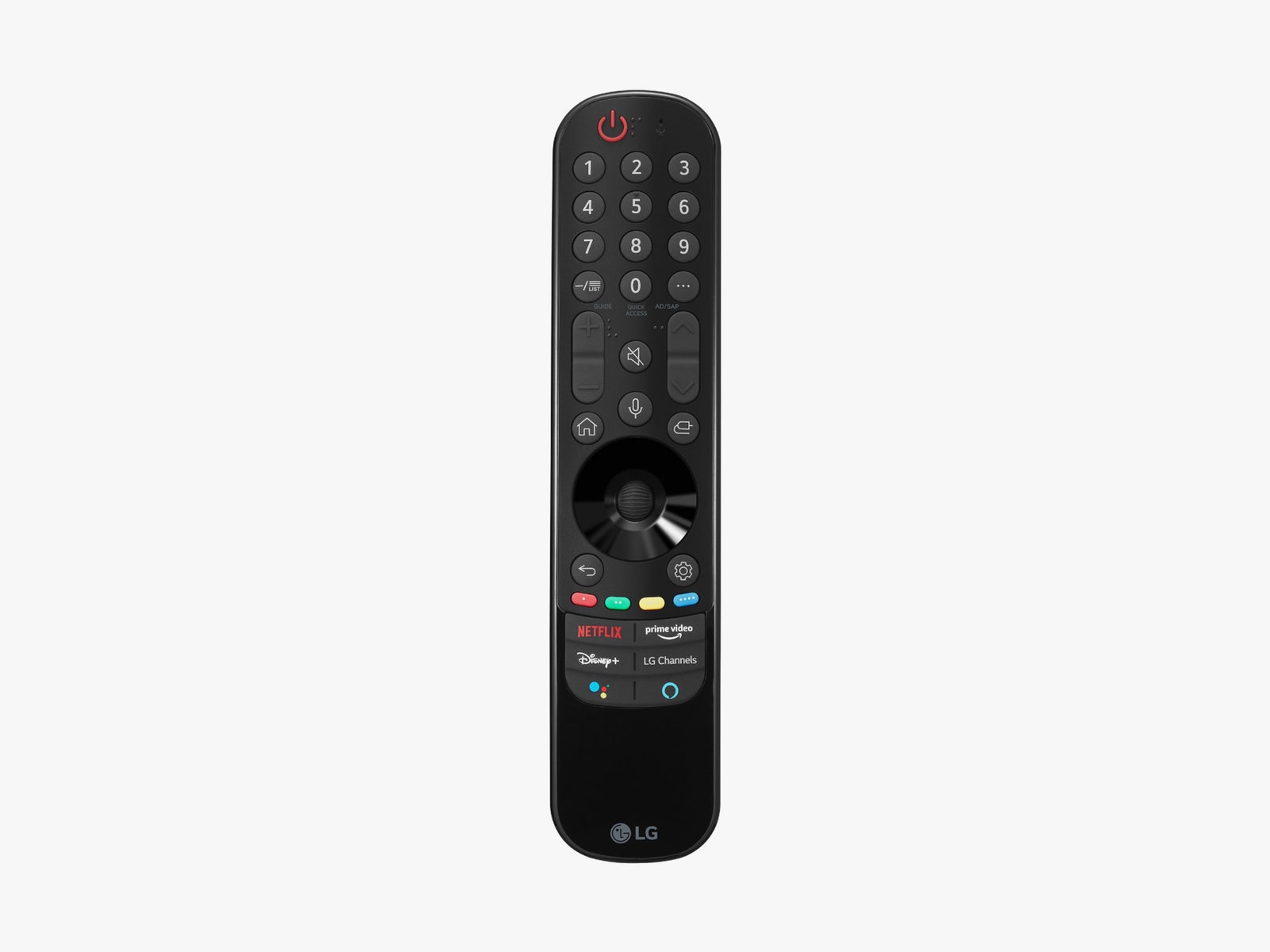Almost all of today’s best-looking TVs are produced by LG. That’s because it’s the only company in the world churning out Organic LED (OLED) displays at such large sizes. Vizio OLED? It uses an LG panel. Sony A8H? Yep, LG. Unlike traditional LED-backlit TVs, OLED delivers perfect blacks and infinite contrast because each pixel produces its own light instead of utilizing a separate backlight.
So when it comes to its own TVs, LG is at a significant advantage, and this year’s LG C1 is very much the crown jewel in a decade of dominance. It finally blurs the divide between TVs and gaming monitors. With 4K playback at 120 frames per second, a super-low input response, as well as both Nvidia G-Sync and AMD FreeSync in tow, the C1 is the first TV I regularly plug my gaming PC into for a better experience than my traditional desktop monitor.
I can enjoy Ted Lasso and virtual trips around the Nurburgring in F1 2020 one after the other, and I’ve never experienced anything finer.
The OLED Advantage
The reason OLED TVs are better for gaming than their LED-backlit counterparts is that they don’t have the extra step of processing the backlighting. This single step in the processing chain amounts to a significant reduction in input lag—the time it takes the TV to register your joystick movements.
After a few years of refining, LG’s team has gotten this new OLED’s input lag time down to levels that are equivalent or better than most gaming monitors. Don’t just take LG’s word for it. RTINGS’ nitty-gritty tests show staggeringly impressive results too.
LG’s C1 also supports technologies from video card manufacturers like Nvidia and AMD that keep a game’s frame rates synced with the screen’s refresh rate, so everything looks amazingly smooth. It functions as well or better than my 38-inch ultrawide, and the deeper blacks from the OLED panel bring an astonishing level of depth to games I’ve never encountered before on PC monitors.
The elephant in the room here is that it’s extremely hard to find graphics cards that can power gaming on a TV like this right now. You can buy an Xbox One X or Playstation 5 for 4K 120-Hz gaming, but you’re in for a rough time finding one of those too.
If you ever do get the right card or the right console, your gaming experience will be practically unparalleled with the C1. The 4K resolution looks so much better on a bigger screen—on smaller monitors, the pixel density is very difficult for the human eye to see. The experience is especially pronounced in sports simulator games like FIFA 21 or Formula 1 2020; the TV’s 65-inch size, resolution, and perfect contrast really make it feel like you’re playing the real sport like a pro.
Cinema Quality
I often used game mode on the C1 when playing with my PC and Nintendo Switch, but my favorite for watching anything is Cinema mode. It yellows up the image a bit, and made everything from The Lord of The Rings trilogy to 2001: A Space Oddysey look amazing. Scenes set in space look especially fantastic as you won’t run into a “glow” around brighter objects when there’s a black background—a common issue with LED-backlit TVs.
One downside with OLED TVs is screen burn-in, which is a mark left on the screen by static images. It’s not nearly as prevalent as on the plasma TVs of the past, but if you play the same games or TV channels, with the same static icons for thousands of hours, it might begin to burn into the screen. My opinion? If you’re doing that activity that much on a TV, you probably won’t notice the burn-in.
The C1’s remote
Photograph: LGThe bigger issue I had with it is the interface. I love LG’s use of a Wiimote-like clicker (you can point and click at everything on screen), but its smart TV platform is a bit clunky. It doesn’t easily let me cast to it from Windows, and streaming support is still lacking (there’s no HBOMax app yet, for example). The apps it does have (Netflix, Hulu, Amazon Prime Video, Plex, and many others) work great, but the lack of casting made it so I had to plug in my PC to watch HBO. That feels weird for a premium TV.
Oh, and like most flat-panel TVs, the speakers sound flat and tinny. With a TV this nice, you need to grab a nice soundbar.
Blurred Lines
LG’s OLED dominance might soon be eclipsed. By 2030, Samsung, TCL, Vizio, Sony, and others will likely be producing astonishing Micro-LED TVs. It mimics OLED’s darkness but dramatically improves brightness. For what it’s worth, the C1 doesn’t get nearly as bright as the best LED-backlit TVs, but I had no trouble seeing it in various viewing conditions. That means for the foreseeable future, OLED TVs like this C1 offer the absolute pinnacle of home viewing for both gamers and cinephiles alike.
If you’re a high roller who loves gaming as much as you enjoy watching films in super high definition, this is the best screen I’ve ever tested. You can spend a bit more for a higher-end model from Sony or even LG, but I’d say save your cash: The C1 looks so good, you’ll barely be able to see a difference.

